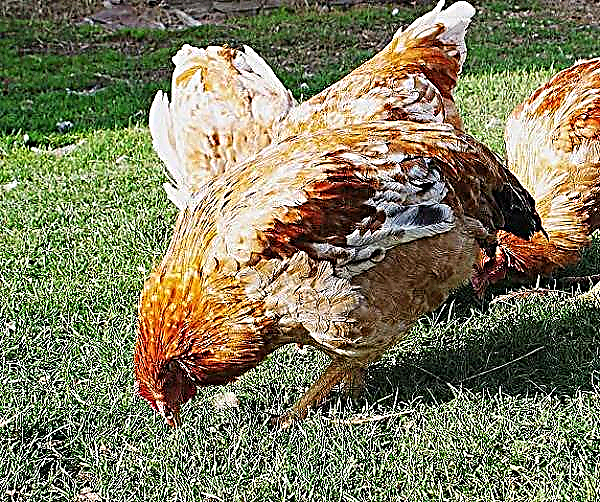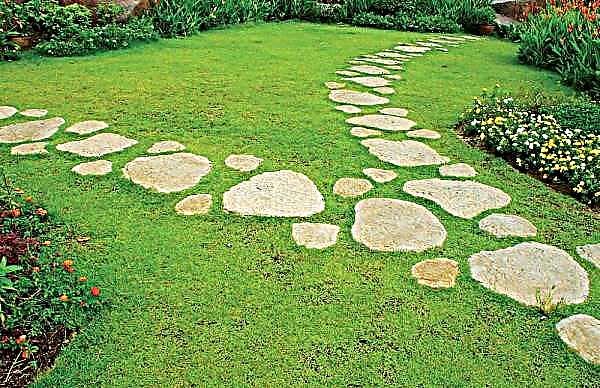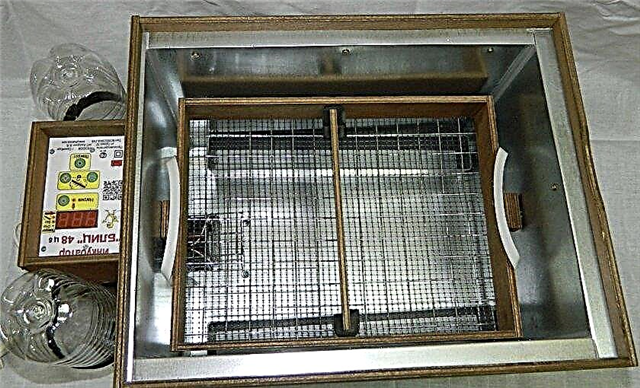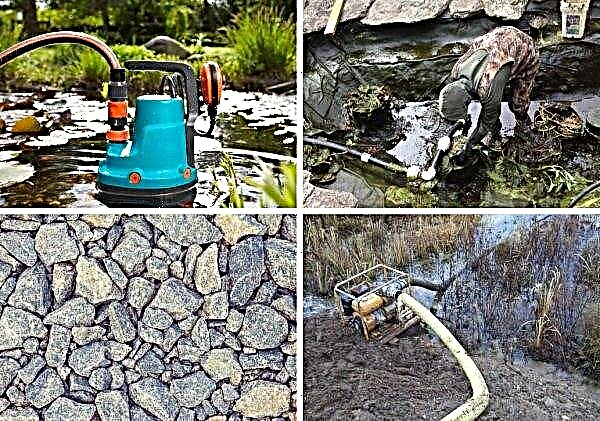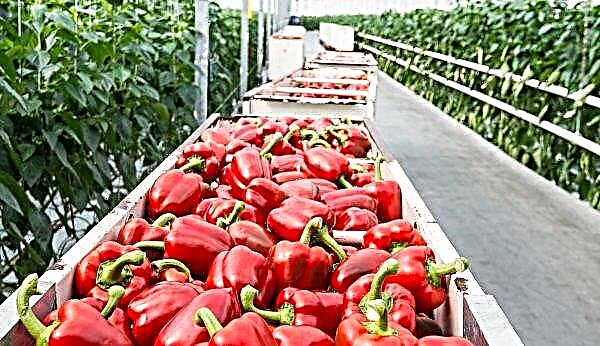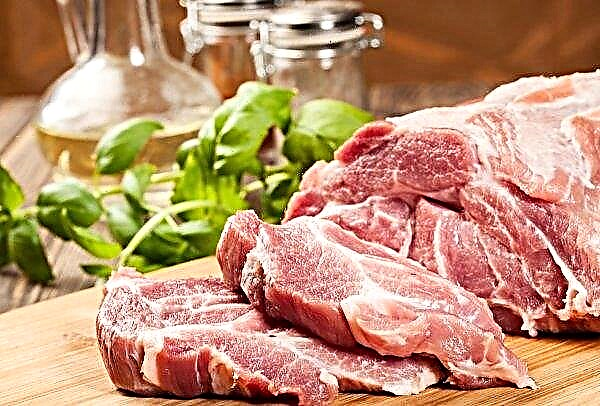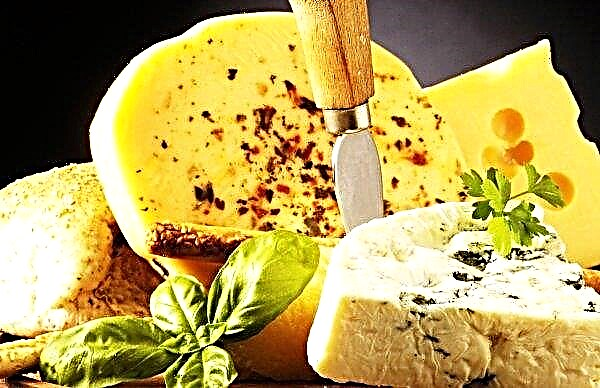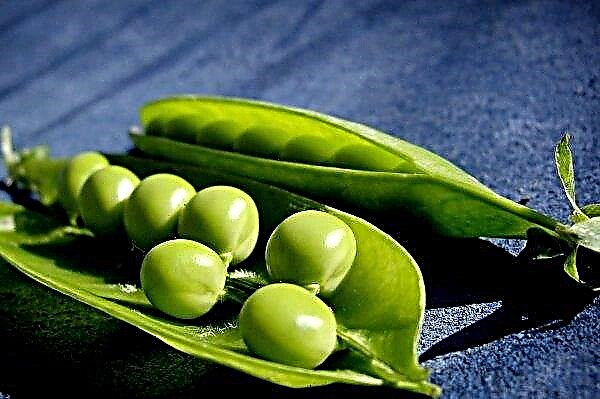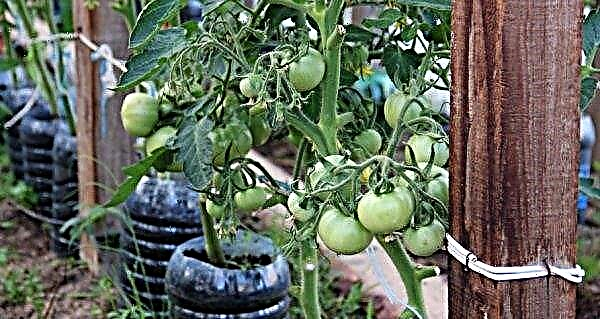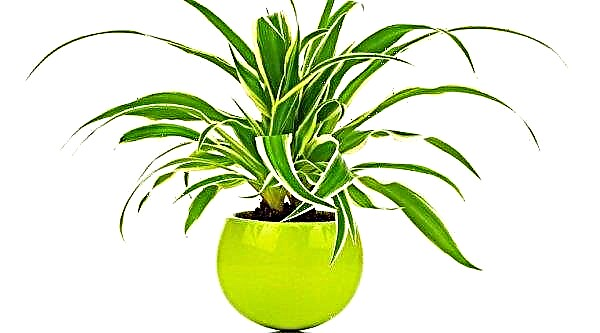Using simple methods of distilling onions onto a feather, you can provide your family with vitamins in the off-season and in winter or build a profitable business for growing and selling green onions. It is not difficult to drive onions to greens yourself. It is only important to choose the right varieties, get acquainted with the basic methods and create comfortable conditions for the culture. This will be discussed in this material.
What varieties are better chased
Choosing varieties of onions for distillation on a feather, you should pay attention to such a characteristic as multigranularity and multicavity. Multiglossality is the number of bud buds in the bulb, from which a green feather grows. Buds are considered buds that are located at some distance from each other and are separated by onion flakes. There can be 4–6 rudiments, which is considered ideal for forcing, but 8–15 rudiments are also found. The yield of green mass depends on this amount. Multi-nesting is the number of fused bulbs, each of which can be multi-bud. When buying a planting onion, cut the bulb across to determine the number of primordia. In the presence of 1-2 kidneys in the bulb, the amount of green mass will be small. And the main goal of the vegetable grower is to collect the maximum amount of prepared green onions from 1 m².
Multi-nesting is the number of fused bulbs, each of which can be multi-bud. When buying a planting onion, cut the bulb across to determine the number of primordia. In the presence of 1-2 kidneys in the bulb, the amount of green mass will be small. And the main goal of the vegetable grower is to collect the maximum amount of prepared green onions from 1 m².
Therefore, for distillation on a feather, you should choose multi-grape varieties of onions:
- Karatal (Karatal) - a multiglossal (3–7 buds) variety with a medium-sharp taste. It has a short rest period, wakes up early and is suitable for distillation in early autumn. The yield of green mass is 70%.
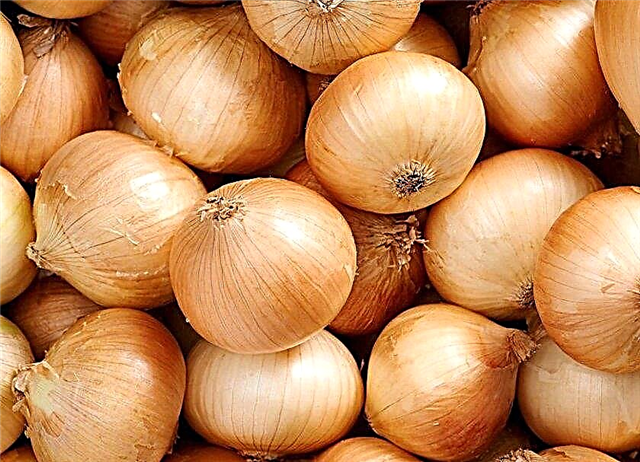
- Rostov (Lugansk) - It has an average dormancy period, has more than 3 primordia, is distinguished by a sharp taste and fleshy feather. When forcing out large turnips (more than 5 cm) and rationally feeding, you can harvest green onions - 6–7.5 kg / m², when planting 10 kg / m².

- Stuttgart Riesen (Stuttgart) - a variety of a long period of dormancy, a semi-acute taste, has more than 3 primordia. Suitable for distillation in mid-winter and is characterized by a good increase in green mass (70–90%).

- Egyptian - imported onions. It is usually collected in April-May, so the rest period is coming to an end. It has good performance in the forcing of the pen. You can find such an onion empirically by cutting the onion and determining the number of primordia.

- Chalcedony - a widely available variety of onions of a medium rest period is suitable for distillation in the winter-spring period. Inflorescence without bitterness up to 16 cm long. The number of primordia depends on the size of the bulb: 4–6 cm –– 3–6 primordia (70% yield), 3-4 cm –– 2–4 primordium (50% yield). Productivity 5–7 kg / m².

- Spassky Local Superior - a sharp variety of medium dormancy, multiglossate (7–10).

- Slime onion (glandular) - The pen is dense, wide and thick, not demanding on lighting. It has high taste and a weak garlic aroma. Productivity from 1 kg of planting material in 4 weeks is 2-3 kg of greenery.
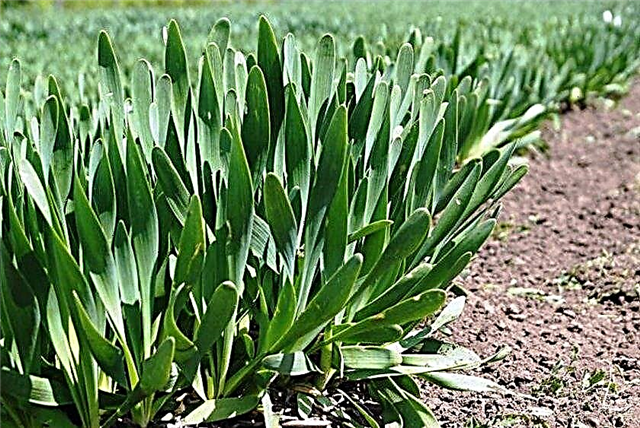
- Shallot (varieties Zvezdochka, Delicacy, Emerald, Sir-7) - a feather up to 40-50 cm. Unpretentious in cultivation, the first crop is received already 10 days after planting. Productivity from 1 kg of planting material - up to 3 kg of feather.

- Leek (pearl), varieties Camus, Goliath, Tango - does not form bulbs, the height of the feather is 50–70 cm. The leaves grow on a false thick white stem, the most delicious part of the plant. The mass of the stem is 200-400 g. Productivity is 2-3 kg / m².

- Onion-batun - perennial varieties Baron, April, Sunrise, Parade. No bulbs. It forms an even shoot with a cylindrical long false stem, which is cut 2-3 times per season. Productivity - 2.5–4 kg / m².
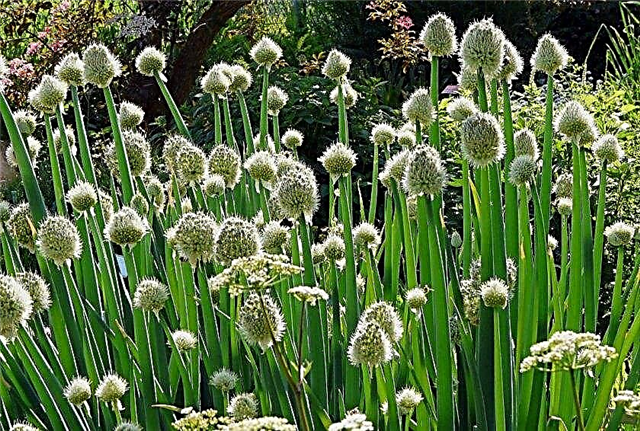
- Schnitt (rezanets sibulet, Siberian), varieties Spring, Bohemia - The feather is thick, narrow and tender up to 50 cm; it does not coarse. It is used for distillation in winter by small false bulbs or seeds. The productivity of the pen is 2.5 kg / m².
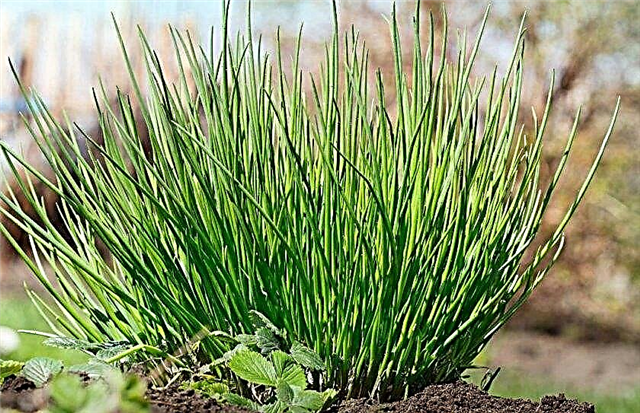
- Layered Onion (Canadian, Horned) - forms the basal and air bulbs. The feather is 40–50 cm long, and after 15–20 days, it can be cut off for cooking. The productivity of the pen is 10–16 kg / m².

In addition to the above, popular varieties of onions that are used in the production of greens are the varieties Arzamassky, Mastersky, Soyuz, Bessonovsky, Troitsky, as well as red varieties - Samarkand, Black Prince, Red Baron, Carmen.
Did you know? The Russian botanist Andrei Famintsyn first applied backlighting to plants in the greenhouse with kerosene lamps in 1868 and proved the importance of not only natural light, but also artificial light in photosynthesis.
Methods and methods of forcing onions to greens
Green onions are able to grow at any time of the year, and anyone can choose a method of growing convenient for themselves, based on their needs and conditions: on open beds or in a greenhouse, for commercial production or individual consumption, in room conditions in trays and pots on the windowsill, loggia or balcony for home use. At the same time, it is possible to quickly expel a feather from a bulb in two main ways - in water and in soil.
Ground landing methods
For distillation in an open area in the garden, a multi-bud turnip (3-4 cm) is planted in the fall (in October) or in the spring (in March). In the autumn, beds with planted bulbs should be sprinkled with a layer of humus (3-5 cm) and mulched. In the spring, mulch is removed and a film greenhouse is installed above the bed. Onion consumption - 10–13 kg per 1 m².
Forcing greens out of seeds takes longer, but is more economical. Seeds of perennial crops will be much cheaper than turnip of the same varieties. Sowing is carried out in the middle of summer. When one leaf appears, the seedlings are thinned out. By winter, the height of the feather will reach 20-30 cm. Before the onset of frost, the bed is mulched with straw, leaves or spruce branches. As a result, in early spring you can get early vitamin greens. Another method of distillation is a dense bridge of turnips in specially prepared trays with soil. The size of the bulbs is selected based on the projected yield per unit area: large bulbs will take up more space than the seeds, but will give more powerful greens due to the supply of nutrients in the head. The dimensions of the tray are selected based on the size of the place where the greens will be grown: greenhouse racks, garage, windowsill, balcony. At the bottom there should be a drainage layer and openings for water drainage and a drain pan for collecting it.
Another method of distillation is a dense bridge of turnips in specially prepared trays with soil. The size of the bulbs is selected based on the projected yield per unit area: large bulbs will take up more space than the seeds, but will give more powerful greens due to the supply of nutrients in the head. The dimensions of the tray are selected based on the size of the place where the greens will be grown: greenhouse racks, garage, windowsill, balcony. At the bottom there should be a drainage layer and openings for water drainage and a drain pan for collecting it.
The material of the trays can be plastic, polystyrene foam, wood. It is better to use the soil for filling trays purchased for growing seedlings, where the composition of nutrients is balanced, acidity and structural properties are taken into account. When using garden soil, it must be disinfected with a potassium permanganate solution, calcined in the oven or spilled with boiling water. More loose soil will make peat or sand additives.
Video: growing green onions in a soil tray
Sawdust planting methods
Green onions can be driven out in sawdust, which should also be sanitized before use. Prepared trays are filled with sawdust with a layer of 5 cm. The sides of the tray should be 5-10 cm higher so that the sawdust does not wake up. Bulbs are tightly laid on wet sawdust in a bridge way. Sawdust retains moisture well, which is the advantage of this method of distillation, but they can only be used once.
Video: planting onions on sawdust
Hydroponic landings
Hydroponics is a method of growing plants without soil. Plant nutrition is obtained from a nutrient solution in which the roots are immersed. Forcing onion greens with this method takes place in warm water enriched with oxygen, which stimulates root growth. The method will require additional devices, namely:
- a special container made of opaque material with a lid and holes for the bulbs;
- aqueous solution with fertilizer;
- compressor;
- water heater.
Did you know? Europe owes many vegetables to America. But the onion was brought to the American continent by the expedition of Christopher Columbus. First, it was landed on the island of Isabella, and then spread throughout the mainland.
Bulbs are planted in the openings of the lid so that the level of the aqueous solution touches the bottom of the heads. Next, connect the water heater and compressor to provide blowing and heating. Germination is carried out for 15-20 hours. Then, the intensity and frequency of oxygen enrichment are reduced, and the water temperature is reduced by 2–3 °. The method allows you to accelerate the germination of the pen due to root stimulation and forcing out year-round, but economically costly, as it requires professional equipment and well-equipped rooms, but the costs can pay off in one season after the sale of products. The yield of greenery at a feather height of 30 cm is 10-12 kg / m². At home, you can use an oxygen compressor for the aquarium and a water heater. On sale there are special hydroponic installations (“Onion Happiness”), which ensure the growth of a green feather in 15 days.
The method allows you to accelerate the germination of the pen due to root stimulation and forcing out year-round, but economically costly, as it requires professional equipment and well-equipped rooms, but the costs can pay off in one season after the sale of products. The yield of greenery at a feather height of 30 cm is 10-12 kg / m². At home, you can use an oxygen compressor for the aquarium and a water heater. On sale there are special hydroponic installations (“Onion Happiness”), which ensure the growth of a green feather in 15 days.
Video: planting onions in hydroponics
On the windowsill
At home, you can use forcing on a windowsill in water or soil. For the water method, suitable containers or containers are filled with warm water with dissolved fertilizers that accelerate plant growth. Bulbs are placed so that only the bottom touches the water. To do this, you can cut out the cells in cardboard or plastic, perfect egg cartridges or floating sheets of polystyrene. Water is added as needed, avoiding drying out of the roots. Change the water, rinse the roots and cut the rotted out only if it has deteriorated or bloomed.
To do this, you can cut out the cells in cardboard or plastic, perfect egg cartridges or floating sheets of polystyrene. Water is added as needed, avoiding drying out of the roots. Change the water, rinse the roots and cut the rotted out only if it has deteriorated or bloomed.
Video: forcing onions on the windowsill in the water
For growing in soil, trays or pots filled with a nutrient substrate are used. Tanks with planted bulbs are placed on the area of the windowsill, on the loggia or balcony. Placing trays near the windows provides a sufficient amount of natural light, which is very important when forcing greenery. But one must not allow overheating from proximity to heating batteries and regularly ventilate the plantings. By choosing beautiful and colorful containers of various shapes, you can thereby provide an aesthetic appearance of the windowsill.
Video: forcing onions on the windowsill in the ground
Preparing bulbs for planting
Planting material must meet the following characteristics:
- diameter - 3–6 cm, weight 30–60 g (small specimens give thin leaves-feathers);
- bulbs should not have damage and signs of disease, be dry and ripe;
- sprouted and not sprouted heads are planted separately.
Important! Onions should not be treated with special preparations that kill the growth point. Such an onion will not sprout and will rot when distilled.
To get the most out of it, planting material before distillation must be properly processed and prepared:
- Cut off the tail of the sample bulb (size 3-5 cm) with secateurs, larger bulbs are cut by a third. The processes of the feather and the roots are cut off for a uniform and simultaneous growth of greenery.
- Prepared turnips are soaked in warm water (+ 45 ... + 50 ° C) for 24 hours. This provides disinfection and growth stimulation. In water, you can add a solution of potassium permanganate or fungicide "Maxim Dachnik", the protective effect of which is longer than that of potassium permanganate, and the whole period of growth of the culture is valid.

Onion Care
The best indicators of yield and quality of greens can be provided with proper and complete care:
- 93% of green feathers are water, so the need for watering this vegetable crop is very high. Pour onion warmed up to + 20 ° C water once a week, avoiding stagnation of water.
- On open beds, loosening is necessary, which does not allow the formation of a soil crust, which slows down growth. Indoors, good ventilation and regular ventilation are required.
- Feeding with complex mineral fertilizers three times a season with an interval of 7 days (the last one week before harvesting) is necessary. The first - a mixture of nitrogen-potassium fertilizers. For subsequent, it is better to use biofertilizers (Gumisol, Baikal EM-1, Vermistim).
- To control pests and diseases, it is necessary to use only biological fungicides and insecticides, which decompose quickly, and greens can be used as food.
Important! The abundance of moisture and lack of heat can lead to root rot disease.
Light mode
The culture is photophilous, but there are varieties that are suitable for cultivation with a lack of light. For forcing in commercial production in enclosed spaces, lighting is provided by fluorescent lamps. At the same time, in the initial phase of distillation (the first 1.5 weeks), lighting for 12 hours during the day is enough. In the future, round-the-clock lighting is necessary so that the pen does not turn yellow. With a lack of illumination, plantings need to be highlighted with phytolamps. The light should be distributed evenly over the entire landing area, otherwise the feather growth will be uneven
The light should be distributed evenly over the entire landing area, otherwise the feather growth will be uneven
Temperature mode
Onions are a cold-resistant crop and can grow at + 10 ... + 15 ° C. But to accelerate the growth of greenery, the temperature should be increased to + 22 ... 25 ° C. Under these conditions, the feather will grow to a height of 30–35 cm in 1.5–2 weeks. But keep in mind that low temperatures can slow down the growth rate up to a month, and excessive heat will lead to wilting and weakening of plants, and at + 30 ° C the growth stops completely. By lowering or raising the temperature, you can adjust the growth rate of greenery.
Growth stimulants
Growth stimulants can increase productivity by 10–20%, germination - by 12%, increase resistance to damaging factors and ensure an earlier yield.
Important! Activities for the preparation of planting material accelerate distillation and increase productivity by 50–70%.
Growth stimulants are used in such cases:
- presowing treatment of seed - soaking in a solution of the preparations "Epin", "Albit", "Baikal", "Heteroauxin";
- leaf spray when 1-3 leaves appear - “Emistima C”, “Biolan”, “Theseus”;
- adding to water for irrigation - "Epin-Extra", "Zircon".
The drugs are equipped with instructions for use, which indicate the rules of use, consumption rates and dilution doses.
Harvesting
The average green yield is 10-12 kg (sometimes up to 16 kg) per 1 m², which provides 65% yield of green feathers. Before harvesting, it is advisable to water the plantings to ensure the juiciness and freshness of the greens. The bow should hold well and not sag, which indicates its quality and elasticity. Harvesting begins when the leaf length reaches 25–40 cm. The root system of the plant is cut with a knife, since when pulling out, the green part can be damaged. It is freed from the ground if distillation was carried out on the ground. In the case of commodity production, they are stacked in boxes with turnips for further sale or sent to the kitchen for culinary use.
Harvesting begins when the leaf length reaches 25–40 cm. The root system of the plant is cut with a knife, since when pulling out, the green part can be damaged. It is freed from the ground if distillation was carried out on the ground. In the case of commodity production, they are stacked in boxes with turnips for further sale or sent to the kitchen for culinary use.
Growing green onions is a cost-effective business with a high probability of payback and the possibility of obtaining vitamin greens for individual consumption, even in an apartment.













